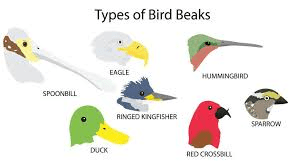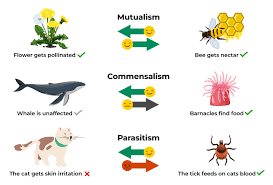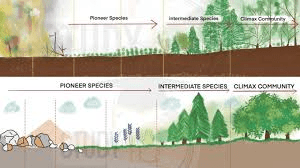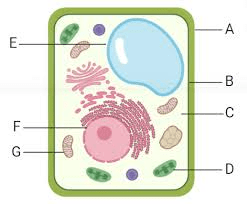What is a species that is not native to an area that spreads and consumes the native species resources?
Invasive Species
What is the role of ecological succession in an environment?
Rebuild biodiversity through NATURAL stages
What are organelles suspended in?
In which organelle are chromosomes and genetic information found?
Nucleus
Why was there a rapid increase of dark colored moths during the Industrial Revolution?
Dark moths were able to camouflage themselves and hide from predators due to soot covering the trees
Define abiotic and biotic
Abiotic: non-living
Biotic: living
River Flooding, Forest Fire, Volcanic Eruption
Name the organelle that contains DNA and is the brain of the cell.
Nucleus
Why do the birds below all have different shaped beaks?

Changes in traits due to different food sources in their environment
Name two types of Asexual Reproduction
Budding, Fragmentation, Binary Fission
Put the following in order from smallest to largest:
community, biome, organism, ecosystem, biosphere, population
Organism, population, community, ecosystem, biome, biosphere
What will happen to species diversity after a wild fire has burned through an area and left ash behind?
Increase in species diversity
Describe the differences between vacuoles in plant and animal cells
Plant cell vacuoles are larger
Provide an example of the three types of symbiotic relationships found in nature- Mutualism, Parasitism, Commensalism

Explain the differences between natural selection and artificial (selective) selection.
Natural: changes to species over time that leads to different traits
Artificial: Human-preferred traits
Label the following levels with the correct amounts of energy: 300 J, 3 J, 30 J, 3,000 J

3000 J, 300 J, 30 J, 3 J
After a storm surge the beaches faced lots of erosion, How will this affect species diversity?
Decrease due to the loss of habitats
Name the organelles found in plant cells that are not found in animal cells
Chloroplasts and Cell Wall
Which picture shows primary succession, and which shows secondary succession?

Top Picture: Secondary Succession
Bottom Picture: Primary Succession
Why do species that reproduce sexually have more of an advantage in rapidly changing environments?
More diversity, different traits that allow for better adaptation
Write the correct order of organization levels for the image (ie. organism, tissue, cell, organ, organ system)
Cell, Tissue, Organ, Organ System, Organism
Label the two cells below as Prokaryotic or Eukaryotic
X= Eukaryotic
Y= Prokaryotic
Label the parts of the plant cell

A- Cell Wall
B- Cell Membrane
C- Cytoplasm
D- Chloroplast
E- Vacuole
F- Nucleus
G- Mitochondria
After what year did the sea otters consume urchins faster than the urchins could reproduce?
1997
Label the parts of the animal cell:
A- Mitochondria
B- Cell Membrane
C- Cytoplasm
D- Nucleus
E- Vacuole
